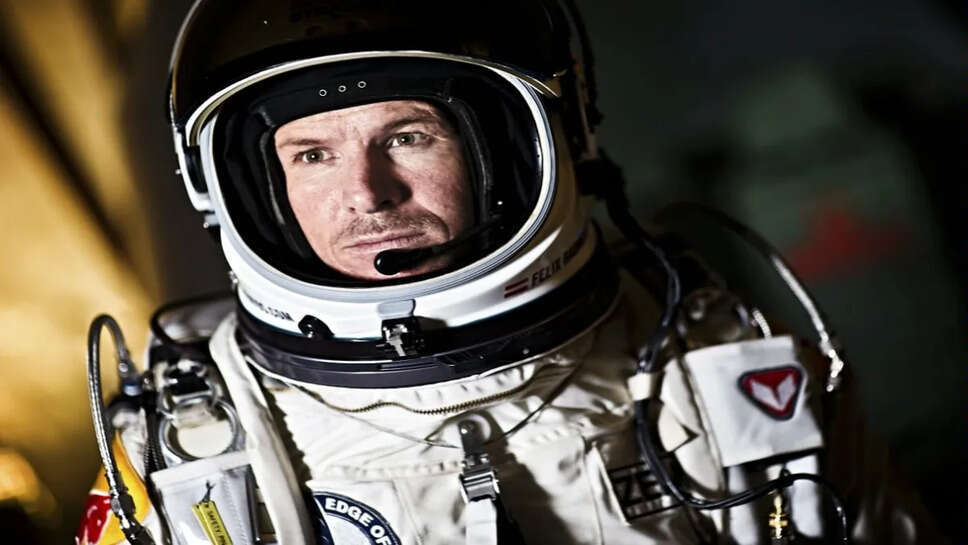Adventurer’s Final Flight: How Felix Baumgartner Lost Control Over an Italian Pool

A hush fell over the world of extreme sports on July 17, 2025, when news broke that Felix Baumgartner, the daredevil Austrian skydiver renowned for his record‑breaking supersonic freefall, had died in a paragliding crash in Porto Sant’Elpidio, Italy. At 56, he was still pushing the boundaries of human courage—yet this time, fate proved unkind.
The Crash: A Sudden and Devastating End
Baumgartner was piloting a motorised paraglider along the Adriatic coast near Porto Sant’Elpidio, a peaceful seaside town in Italy’s Marche region. Eyewitnesses say he appeared to suffer a sudden medical emergency mid‑flight—possibly a cardiac arrest—causing him to lose control of the aircraft. The paraglider spiraled down uncontrollably, crashing into a hotel’s swimming pool at the Le Mimose resort. He died instantly on impact.
A hotel employee was injured by debris and received treatment for neck injuries. Local authorities, including the town’s mayor Massimiliano Ciarpella, expressed profound sorrow, calling Baumgartner “a symbol of courage and passion for extreme flight.”
He Felt Unwell Moments Before
Social media posts from Baumgartner earlier in the day are chilling in retrospect. He shared photos of himself inspecting his glider and warned online of “too much wind.” Perhaps this was his final indication that something felt off—whether due to weather, physical strain, or intuition. Whatever the cause, these messages now carry the weight of tragedy.
A Life Built on Fearlessness
Born in Salzburg in 1969, Baumgartner fell in love with skydiving as a teen and later joined the Austrian military parachute corps. In the 1990s, he emerged as a BASE‑jump pioneer, leaping from landmarks like Malaysia’s Petronas Towers and Rio’s Christ the Redeemer statue. In 2003, he even piloted a carbon‑fiber wing across the English Channel in freefall.
But nothing captured global attention like Red Bull Stratos in 2012. Ascending to nearly 39 km over Roswell, New Mexico, in a helium balloon, he jumped and became the first person to break the sound barrier in freefall—reaching a staggering Mach 1.25. That mission—featuring a terrifying 13‑second flat spin—was watched live by millions and cemented his status as one of the most fearless figures in adventure history.
The Man Beyond the Stunts
Baumgartner was more than an adrenaline junkie; he was a calculated risk‑taker. Known as “Born to Fly,” he meticulously prepared for every jump, collaborating with engineers, suit designers, and medical teams. His mental resilience was as critical as his physical abilities—understanding that at such extremes, survival often outweighed glory.
Yet he was no stranger to controversy. He once supported authoritarian political models, was fined for punching a truck driver during a road rage incident, and had outspoken opinions that divided public opinion. But through it all, his charisma, humility, and utter dedication to exploration drew admiration worldwide.
Immediate Reactions and Global Mourning
Tributes poured in instantly. The mayor of Porto Sant’Elpidio described the entire town as “deeply affected,” while Red Bull paid heartfelt tribute, remembering him as “smart, professional, thorough and meticulous.” Fellow extreme athletes and fans honored him as “a true legend” and “a fearless pioneer.”
His death has reopened conversations about the risks even veteran adventurers face—especially when health emergencies intervene mid‑air.
The Unpredictable Nature of Paragliding
Baumgartner survived high‑altitude jumps, supersonic spins, and BASE‑jump falls. But paragliding, despite its serene imagery, remains a volatile and health‑dependent pursuit. A sudden medical event at altitude can be instantly fatal. Wind variations, equipment failure, and human physiology all play delicate roles. In this case, what seemed like a routine flight turned fatal within seconds.
Italy’s Loss of a Global Icon
Italy, and particularly Porto Sant’Elpidio, has been plunged into grief. Tourist sites have drawn hundreds of onlookers curious and mourning. Local mediators described holidayers watching in stunned silence as rescue teams recovered the wreckage. Officials have grounded paragliding flights pending investigations into safety and the exact medical cause of Baumgartner’s collapse.
What’s Next? Investigations and Closure
Local police, fire services, and medical examiners are investigating the crash. The initial focus is twofold: verifying if Baumgartner had a cardiac event, and assessing whether glider malfunction or weather contributed to the accident. The investigation findings will profoundly shape how paramotoring is regulated, especially for non‑professions of such high repute.
A Career of Firsts—and Final Lessons
Baumgartner held three FAI world records from the Stratos jump: maximum vertical speed, exit altitude, and vertical freefall distance. Though the altitude record was overtaken by Alan Eustace in 2014, nobody has eclipsed his speed or freefall distance achievements.
He transitioned to helicopter displays with the Flying Bulls in Europe later, and hinted at retirement after Stratos—but his spirit remained in the skies. Ironically, surviving every prior mission, his final flight was a reminder that experience does not insulate one from fate.
His Legacy: Courage, Science, Inspiration
Baumgartner elevated skydiving to a blend of science, spectacle, and humanity. Red Bull Stratos provided valuable data on supersonic descent and life‑support systems. His calm demeanor amidst peril inspired countless — not just spectators, but researchers who now better understand extreme flight physiology.
His life reinforced a simple premise: exploration requires risk, and that risk sometimes has a tragic cost—even for legends.
The World Without “Fearless Felix”
Now, the sky seems quieter. Videos of Baumgartner’s supersonic jump still circulate, his thumbs‑up gesture a digital relic of bravery. Tributes and IMDb-style retrospectives will flood social media, drawing new generations to his story: not just of daredevilry, but of a person who risked everything to show us the limits of human possibility.
A Farewell in the Clouds
Felix Baumgartner’s death is more than the passing of an adventurer—it’s the closing of an era where the edge of space was a final frontier, conquered by one man with courage and vision. He proved that humans can descend faster than sound, cross the Channel in freefall, and leap from iconic landmarks. That he lost control, not in a heroic leap but in a sudden collapse, brings profound irony—and sorrow.
Yet even in tragedy, his legacy remains intact. He taught us that pushing boundaries takes heart, planning, and a touch of madness. The sky he loved has claimed him—appropriate, perhaps, for someone who once touched its ultimate heights.
Today, the world bids farewell to “Fearless Felix.” May his memory inspire future explorers, and may his final flight remind us that courage and mortality often ride together—especially when you’re born to fly.
